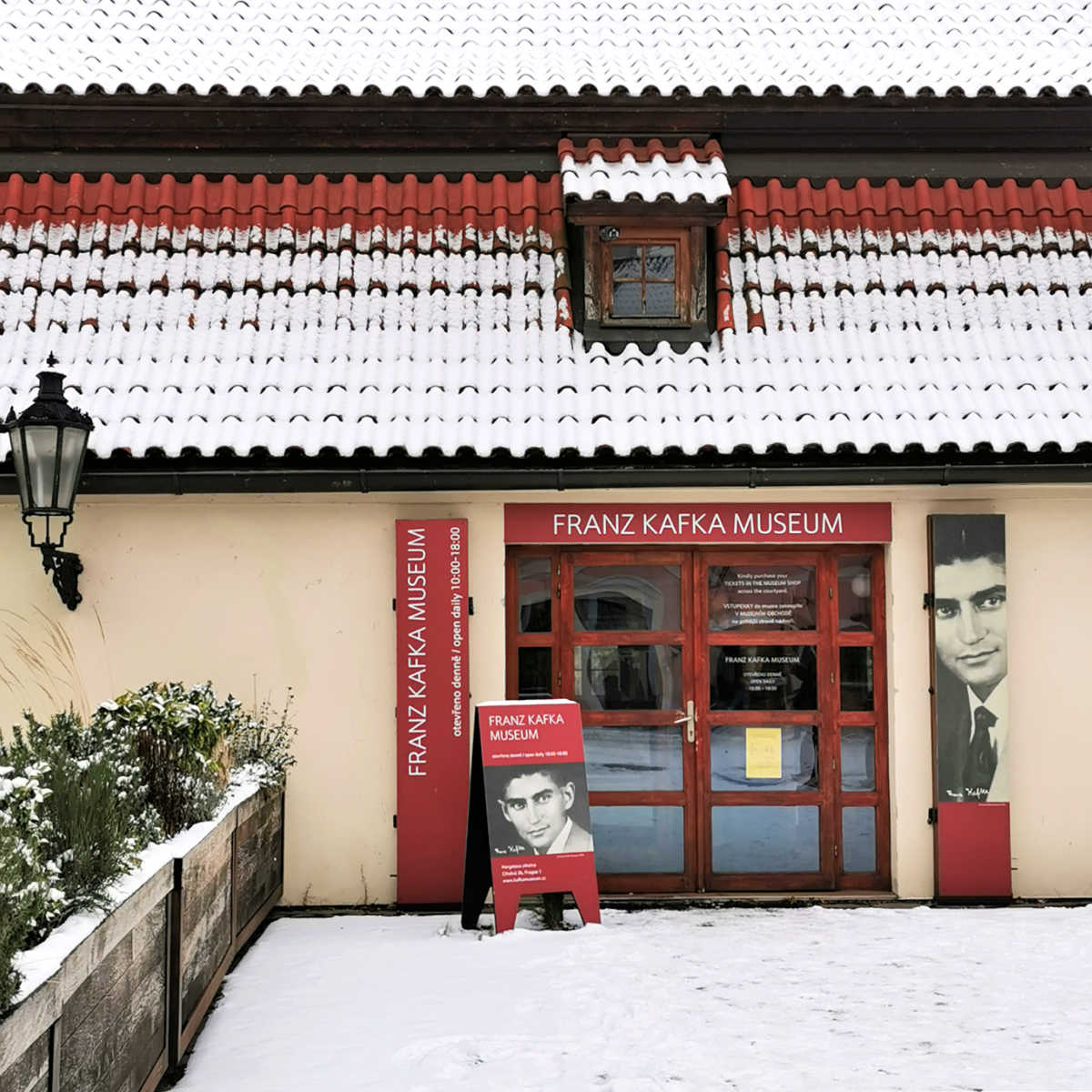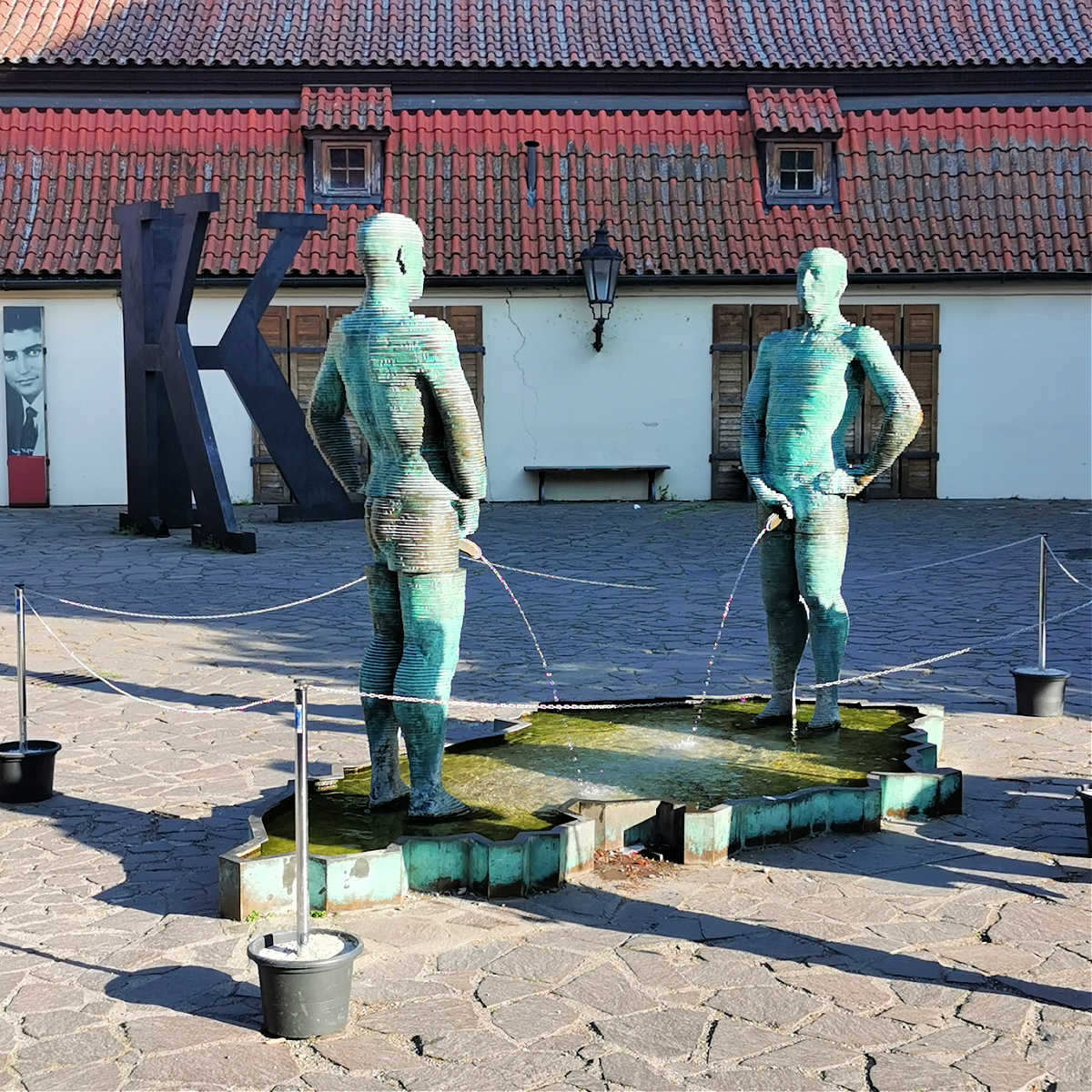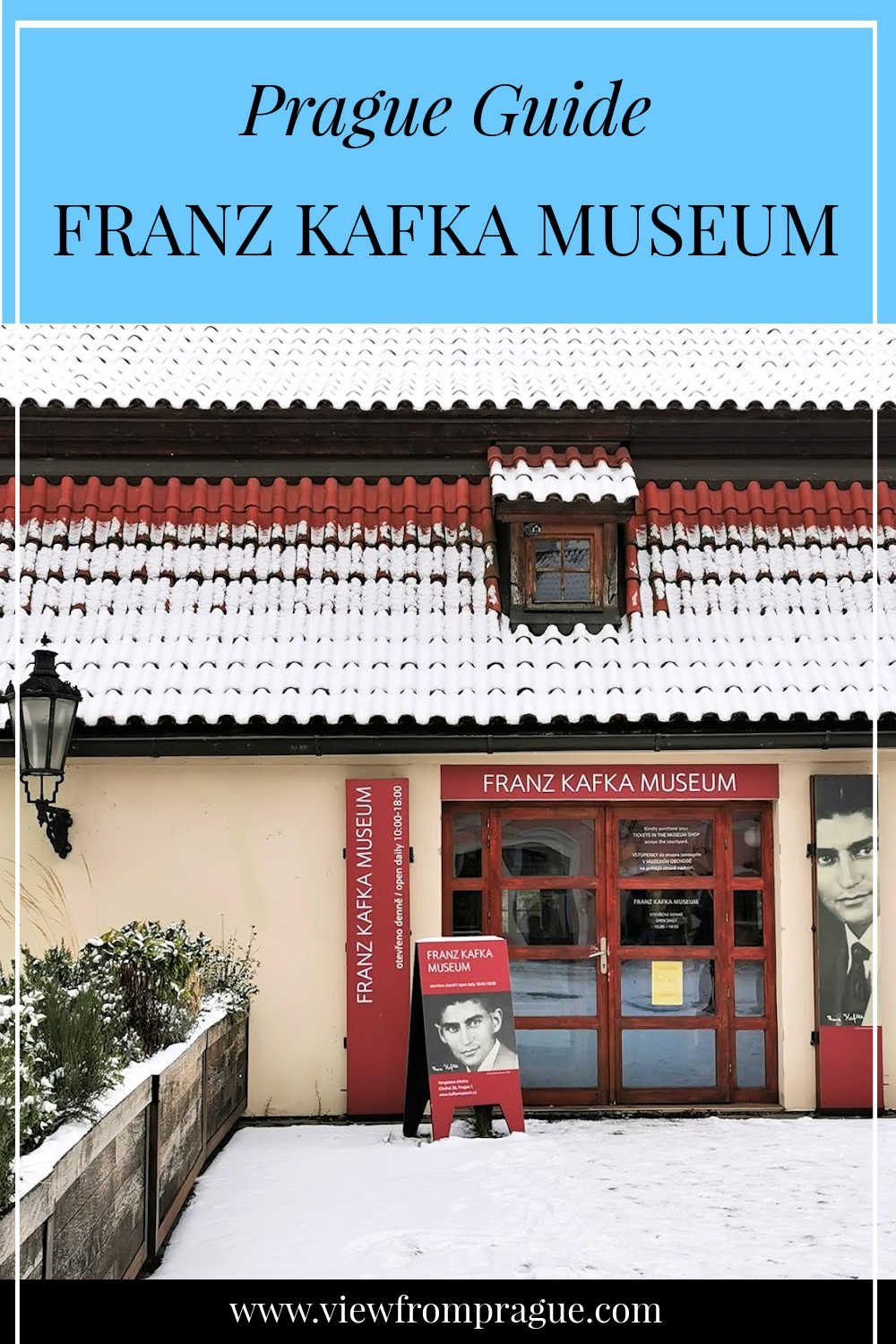Franz Kafka Museum: Prague Attraction for Literature Enthusiasts (2025)
Guide to Franz Kafka Museum a perfect attraction for literature enthusiasts, including tickets, opening times and insider tips on what to see.
If you fancy learning more about the life and work of Franz Kafka, then you should head over to the Franz Kafka Museum. Kafka’s exhibition in the museum was originally created in 1999 by Dubliner Ira James Joyce and Portuguese Fernanda Pessoy for a series of exhibitions about cities of world-important writers.
From 2002 to 2003, it was on display at the Jewish Museum in New York, and in 2005 the exhibition was moved to Hergetova Cihelna (Hergert’s Brick’s Manufacture) in Malá Strana, just a few steps from Charles Bridge.
MORE MUSEUMS IN PRAGUE

Who was Franz Kafka?
Franz Kafka (1883-1924) was a German-Jewish Prague writer and author of the novels The Trial, The Castle, and Amerika and one of the most significant figures in world literature of the 20th century. His work and life are fascinating and rather sad at the same time. He had a complicated relationship with his father and with most of the women in his life.
His works, including “The Metamorphosis” and “The Trial,” are known for their surreal and often disturbing themes, exploring the human condition and the struggle for identity in a complex and bureaucratic world.
He considered his writing to be his main objective in life, but then he asked his friend Max Brod to burn all his work and diaries after he died. Brod didn’t honour his friend’s will and published some of the work and diaries, but there are still many left unpublished.
Kafka spent most of his short life in Prague’s Old Town. When he was growing up, his family moved a lot, so you will come across traces of Franz Kafka in the Old Town almost everywhere, especially around Old Town Square.
MORE MUSEUMS IN PRAGUE
- Museum of Communism in Czechoslovakia 1948 – 1989 >>
- 8 best museums to learn about 20th century history >>
What can you see inside the Franz Kafka Museum?
The Franz Kafka Museum offers a permanent exhibition display that is divided into two parts: “Existential Space” and “Imaginary Topography”. In the “Existential Space” section, you can explore how the city of Prague influenced and shaped Kafka’s life.
Through video, light, and sound installations, as well as Kafka’s writing, including diaries and extensive correspondence, you can gain insight into the special connection between Kafka and Prague. The exhibition also includes photographs, manuscripts, memorabilia, and drawings of the eccentric writer.
- The Metamorphosis: an interactive exhibit that lets you experience the story of Gregor Samsa, the protagonist of Kafka’s famous novella.
- The Trial: a part of the exhibition, that explores the themes of justice and bureaucracy in Kafka’s novel of the same name.
In the “Imaginary Topography” section, you can explore the physical topography of Prague, which is noticeable in Kafka’s novels and stories, but not precisely described. This imaginary topography and the significance of the described buildings as metaphors and allegorical places are examined in more detail here.

Is the Franz Kafka Museum worth visiting?
This is a tricky question to answer because Prague doesn’t actually have a true Kafka’s museum, where you could see his personal artefacts, explore his life step by step or see where he lived on top of some sort of interpretation of his very complex work and writing.
What we have is an exhibition, that was originally created by non-Czechs for a specific exhibition looking at important world writers and the towns that inspired them. This is why the exhibition is done from the literary angle and also explores how Prague shaped Kafka’s writing (the places in the books are described so well that they could be places in Prague, but they are never directly mentioned)
Perhaps because the museum composition was originally done as an exhibition and then turned into a museum, there are very few exhibits, which mainly include documents or diary pages, but not actual objects that belonged to Kafka.
That’s not to say, that the exhibition is not interesting or valuable to have in Prague, but it’s done from one particular angle. As long as you are OK with that, your expectation of the museum will be different (and you will enjoy your visit) than if you expect to walk into a traditional museum.
Honestly, this museum is best for serious Kafka fans (adults, students interested in literature, and university or college students working on an assignment) as the exhibition is rather heavy on the writing, the books and Kafka’s writing style.
You won’t find any of Kafka’s personal artefacts there or too much about his personal life. I personally think that children are going to be bored here and although the museum offers a slight discount for children’s tickets, it might be still too pricey to come in as a family.
MORE MUSEUMS IN PRAGUE
Who is Kafka’s Museum best for?
- adults & students seriously interested in Kafka’s writing
Insider tip
If you are travelling to Prague on a budget, you can visit the Kafka’s museum shop for free (separate entrance from the museum) and buy a book or a souvenir instead.
To learn more about Kafka’s life you can follow my self-guided tour of Kafka’s Prague, which shows you the houses where Kafka actually lived, wrote (like the tiny house in Prague Castle Golden Lane) and where he is buried.
You can also follow my self-guided tour of David Cerny sculptures, which include the sculpture of the two men in front of Kafka’s Musem and the famous rotating head of Kafka in the centre of Prague.
Address Location
Cihelná 2b, 118 00 Prague 1 – Lesser Town
Opening times
Franz Kafka museum is open daily (all year round) from 10 am – 6 pm.
Admission cost
Adult ticket is 300 CZK and reduced ticket is 220 CZK – available for children, students seniors. Family ticket is 800 CZK (2 adults and 2 children)
Where to get tickets
You can purchase tickets directly from the museum’s website, or buy them at the ticket office directly at the museum. There are usually no queues, so I don’t think you need to book in advance unless you want to be super organised.
Museum Guided Tours
The museum also offers special guided tours in Czech, English, German, French, and Russian, but these need to be booked in advance (min 7 days) and cost extra 1000 CKZ on top of your entrance fee.
You definitely don’t need a guided tour to enter the museum and all exhibits are also in English, but if you’d prefer to have a tour guide, it’s nice that you can book this directly through the museum.
You can also buy Franz Kafka’s City Map (60 CZK) which highlights the places with a special connection to Kafka’s life and works.
Best time to visit
Weekdays are always less busy than Fridays, Saturdays, Sundays and public holidays.
How much time to allow for your visit
1-2 hrs should be sufficient to plan for your Kafka museum visit.
Refreshments & Eating out
There is no cafe at the museum, but you can find a restaurant right next door to the museum entrance and there are several coffee places and restaurants within walking distance of the museum.
Shopping & Souvenirs
The museum includes a shop with a complete selection of Kafka’s works and biographical books, souvenirs and lots of other Kafka-related things to buy. You can visit the shop without buying a ticket for the museum.

Don’t miss the Statue in Front of Kafka’s Museum
In the courtyard of the museum, you can see a fountain with the infamous sculpture by David Černý. The sculpture depicts two men facing each other and urinating in a lake with the outline of the Czech Republic. The statue is very popular and people often take photos of the sculptures from all sorts of angles.
How Do I Get to the Franz Kafka Museum?
The Franz Kafka Museum is in Prague’s Lesser Town, on the banks of the Vltava River and the easiest way is to walk there from the Malostranska Underground or Tram Stop.
To get to Malostranska tram station, take trams number 12, 20, 22, 23 or the historic Prague Tram number 42 and then walk towards the street U Lužického semináře until you reach a fork in the road and then take Cihelná street on your left until you reach the museum. This is about 7-10 minutes walk at the most.
You can also walk from Kampa Island, when you walk across Charles Bridge from the Old Town and turn right down to the streets below the bridge. After about a 5-minute walk, you will see the Gingerbread House shop and the open courtyard of the buildings forming the museum on your right.
Things to do and see around Franz Kafka Museum
- taste the delicious gingerbread at the Gingerbread House opposite the Kafka’s Museum
- visit the toy pedal car museum round the corner close to the Vltava River
- relax in the Vojanov Garden (3 minute’s walk on the U Luzickeho Seminare Street)
- walk through the narrowest street in Prague as you walk back towards the Charles Bridge.
This blog post was originally written on 18 November 2023 and last updated on 18 November 2023
PIN THIS GUIDE FOR LATER







